Narendra Modi often says he likes to think big, dream big and act big.
Having sold tea at a railway station as a boy while his mother washed dishes to make ends meet, the man who could be only the second Indian to win three national elections in a row has come a long way from his humble beginnings. And, he is still thinking big.
Opinion polls ahead of the election starting on April 19 and ending on June 1 predicted he would equal the three-term record of India’s first prime minister, the Western-educated and wealthy Jawaharlal Nehru, who famously called India’s independence in 1947 a “tryst with destiny”.
If he wins, it may be the 73-year-old Modi’s last term in office and he wants to cement a legacy of setting India on the path to abolishing poverty and becoming a fully developed nation by 2047, the 100th year of independence from British colonial rule.
He has set a tentative target of increasing the size of the economy by about eight times to $29 trillion by then and the per-capita income by about seven times to nearly $18,000, apart from securing a permanent seat at the U.N. Security Council.
“I am dedicating every moment to making India a developed country,” Modi said at a campaign rally in April. “That’s why I am working 24X7 for 2047.”
As voting progressed, opposition parties said they had become more confident of winning, backed by promises of higher handouts, affirmative action and more jobs.
India’s Lok Sabha election 2024: What you need to know
WHAT IS IT?
The elections are to 543 contested seats in the lower house of parliament, called the Lok Sabha, for a term of five years. To rule, a party or a coalition needs a simple majority of 272 seats. Modi’s Bharatiya Janata Party (BJP) won 303 seats at the last election in 2019, followed by 52 for the main opposition Indian National Congress (INC).
In addition to the contested seats, India’s president can nominate up to two Anglo-Indians to the Lok Sabha.
WHERE AND WHEN IS IT TAKING PLACE?
The elections are being conducted in seven phases partly to ensure sufficient security at polling booths across the vast country. Voters can make their choice by pressing a button on an electronic voting machine, first used in India in 1982 and more widely since the early 2000s.
Votes will be counted on June 4 after polling on April 19, April 26, May 7, May 13, May 20, May 25 and June 1.
HOW DOES IT WORK?
The world’s most populous nation follows the first-past-the-post system, where voters cast a vote for a single candidate in a constituency and the candidate with the most votes wins the seat. The voting age is 18 years and contestants need to be at least 25 years old.
A total of 968 million voters are registered, out of which 497 million are men and 471 million are women.
WHO ARE THE MAIN CANDIDATES?
Modi headlines the race, followed by his de facto deputy Amit Shah and the main opposition face, Rahul Gandhi of the Congress party. Gandhi’s mother Sonia, the matriarch of the Nehru-Gandhi dynasty, is not contesting this time.
WHY IT IS IMPORTANT, WHAT ARE THE KEY ISSUES?
Modi is chasing a record-equalling third straight term like India’s first prime minister, Jawaharlal Nehru. Modi says another overwhelming victory for the National Democratic Alliance, led by the BJP, is crucial to meet his goal of lifting India to a developed economy by 2047 from middle-income levels.
The world’s fifth-largest economy has grown fast in the past few years and Modi has “guaranteed” to take it to the third position if he wins the election.
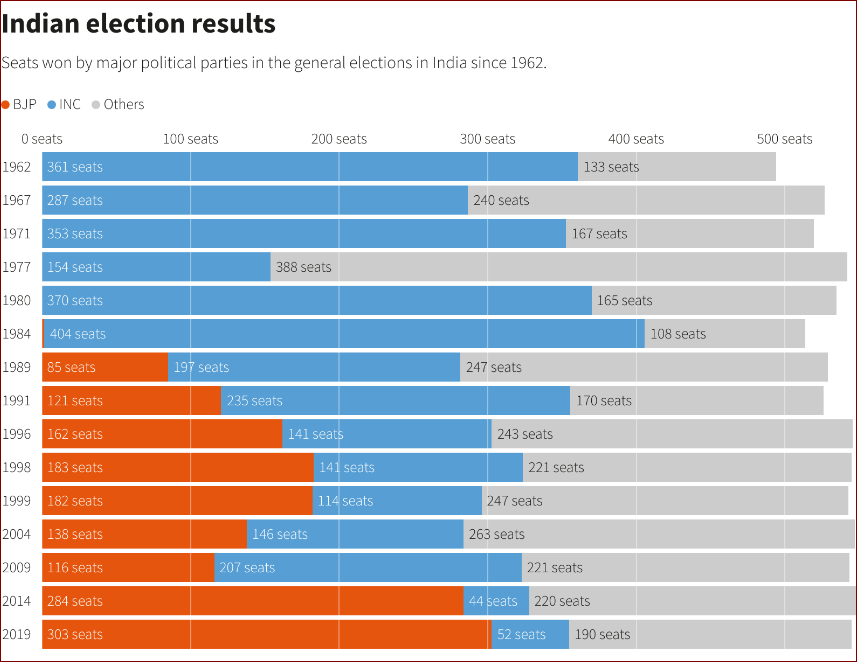
The BJP draws its support mainly from Hindus, who form 80% of the country’s 1.42 billion people and for whom Modi earlier this year delivered on a key party promise of building a grand Hindu temple on a disputed site.
The opposition “INDIA” alliance, largely a centre-left grouping of more than two dozen disparate parties, says a victory for it is essential to save the country’s democratic and secular setup, lift its marginalised communities, raise prices for farmers and create jobs for its young.
Opinion polls, which have a mixed record in India and were conducted before voting began, had predicted another thrashing of the Congress alliance at the hands of the BJP.
They say another term for Modi could severely damage India’s secular and democratic traditions, arguing his Hindu nationalist agenda has polarised the country. He has also been accused of authoritarian rule, a clampdown on dissent and politically motivated arrests of key opposition leaders for alleged corruption.
In a relentless pursuit of votes for nearly 23 years, beginning in 2001 when he became chief minister of his native Gujarat state, Modi has not shied away from using his modest upbringing to build a following in a country where hundreds of millions of its 1.42 billion people are poor.
“I know the pain of living under a weak roof,” he told a rally in Bastar, one of the most underdeveloped regions in India.
“I know what a mother goes through when there is no food at home. I know how helpless one feels when there is no money to buy medicine. Therefore, I decided that I will not rest until I remove every worry of the poor.”
He regularly ridicules the Nehru-Gandhi dynasty for what he sees as its entitled control of the main opposition Congress party despite heavy defeats in the last two elections, while he himself has kept his family at a distance – and out of politics.
“I have left my family. Not for myself, not for fun, but for my country. This is my country, this is my family,” he told another rally in March.
TOO SUCCESSFUL?
Modi has not visited his family since his mother, who used to live in Gujarat with one of her four other sons, died in late 2022, said his younger brother Pankaj. Modi’s estranged wife Jashodaben lives separately in the western state.
“My brother has always maintained a very clear boundary between his work and family,” Pankaj Modi, a retired Gujarat government official, told Reuters.
Modi’s ability to overcome a difficult childhood has made him successful, but he may be too successful, said Surendra Kumar Dwivedi, a former head of the Department of Political Science at Lucknow University.
“My sole issue with Modi today is that he has become larger than the party itself,” he said. “In a democratic system… a party should always supersede an individual.”
HINDU FERVOUR
Modi and his Bharatiya Janata Party (BJP) have consistently wooed the majority Hindu community, including by shepherding the building of a Hindu temple on the site of a razed mosque, igniting a wave of religious fervour.
His approval ratingas of early May was 74%, the highest among 25 world leaders tracked by U.S. data intelligence company Morning Consult.
Modi was once a pariah in the Western world because of deadly religious riots when he was chief minister of Gujarat in 2002. But he is now courted, thanks to India’s world-beating economic growth and its position as a counter-balance against China.
At least 1,000 people, mostly Muslims, were killed across Gujarat in the riots, although activists put the toll at more than twice that number. Critics accused Modi of failing to protect Muslims, but he denied the charges and a Supreme Court-ordered investigation found no evidence to prosecute him.
The United States, nevertheless, has raised concerns over the treatment of Muslims, underprivileged Hindus, Christians and other religious minorities in India in his rule. Modi says his government works for the welfare of all without discriminating.
Modi has not addressed a single press conference in the past decade, but the Indian media fawns over him, giving him wall-to-wall coverage as he tours Hindu temples or speaks at rallies.
He honed his oratory as a full-time propagandist for the Hindu nationalist Rashtriya Swayamsevak Sangh, the de facto parent of the BJP that he joined after school.
With thinning white hair, a neatly trimmed white beard and immaculate Indian attire, Modi is the dominant face of election campaigns for the BJP.
In 2015, he was ridiculed for wearing a suit embroidered repeatedly with his name while meeting U.S. President Barack Obama. The suit was later auctioned and sold to a Gujarat diamond merchant for over half a million U.S. dollars that was used on a project to clean the Ganges river.
Modi’s aides and his ministerial colleagues say the demands on his time mean he sleeps little.
“I am working with a boss who practically works 20 hours a day and has not taken a single vacation in whatsoever number of years I have seen him,” Ashwini Vaishnaw, minister for railways and electronics, told a recent event.

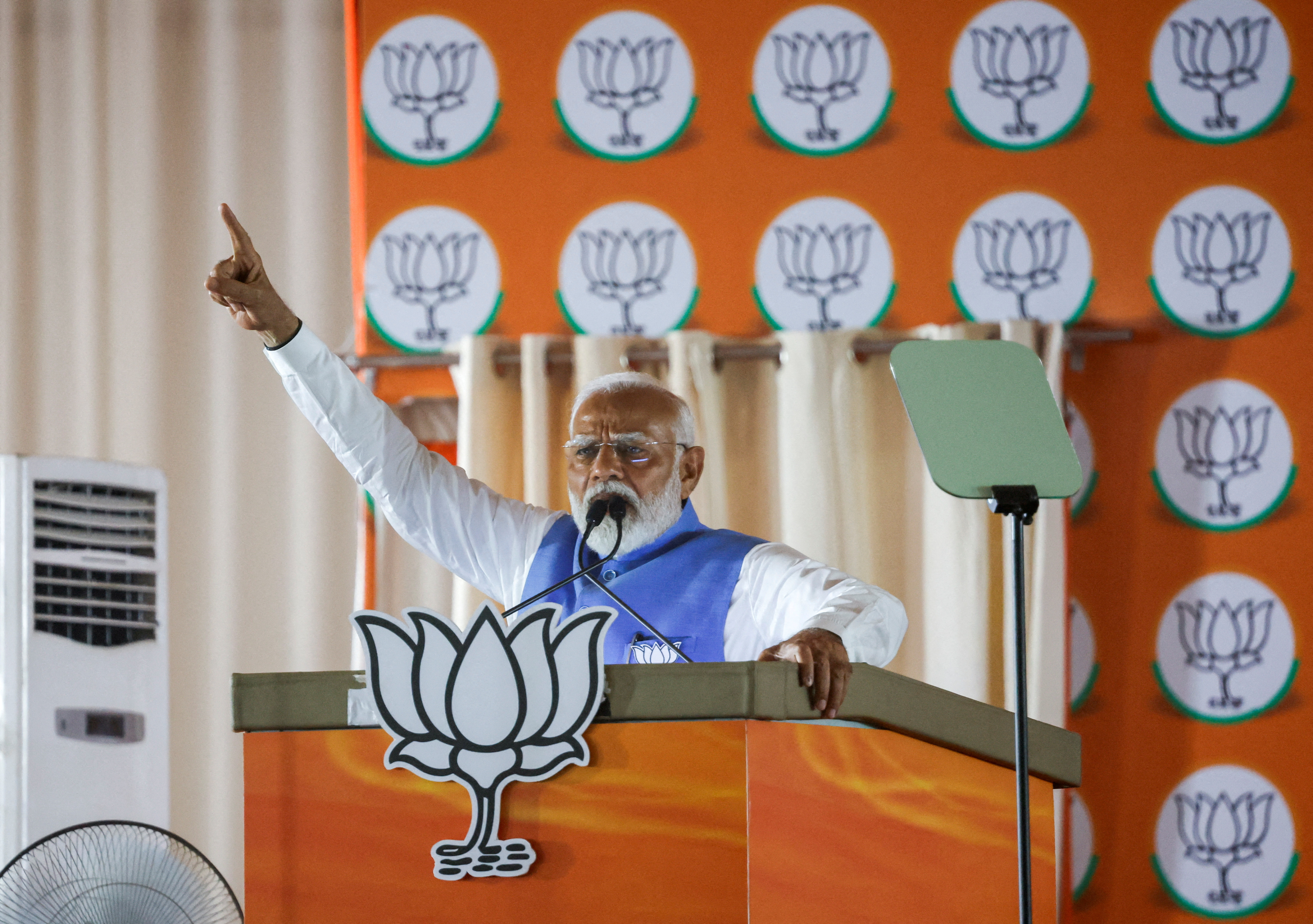

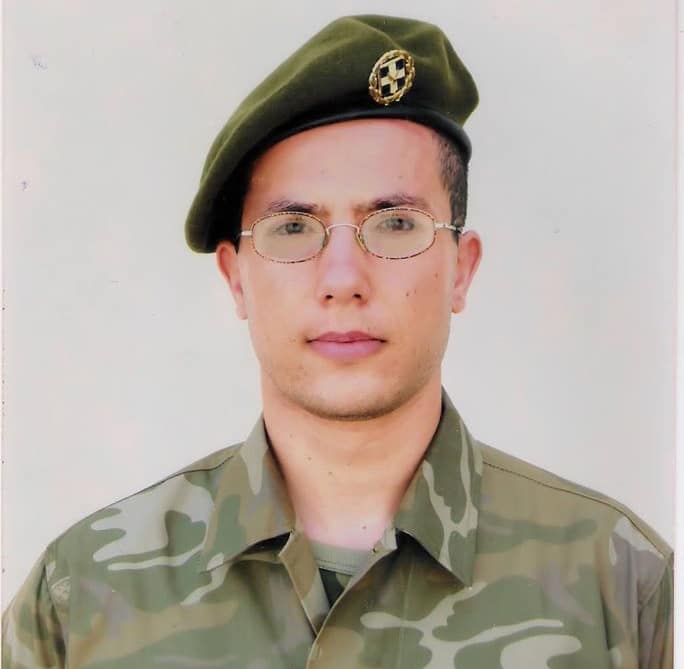
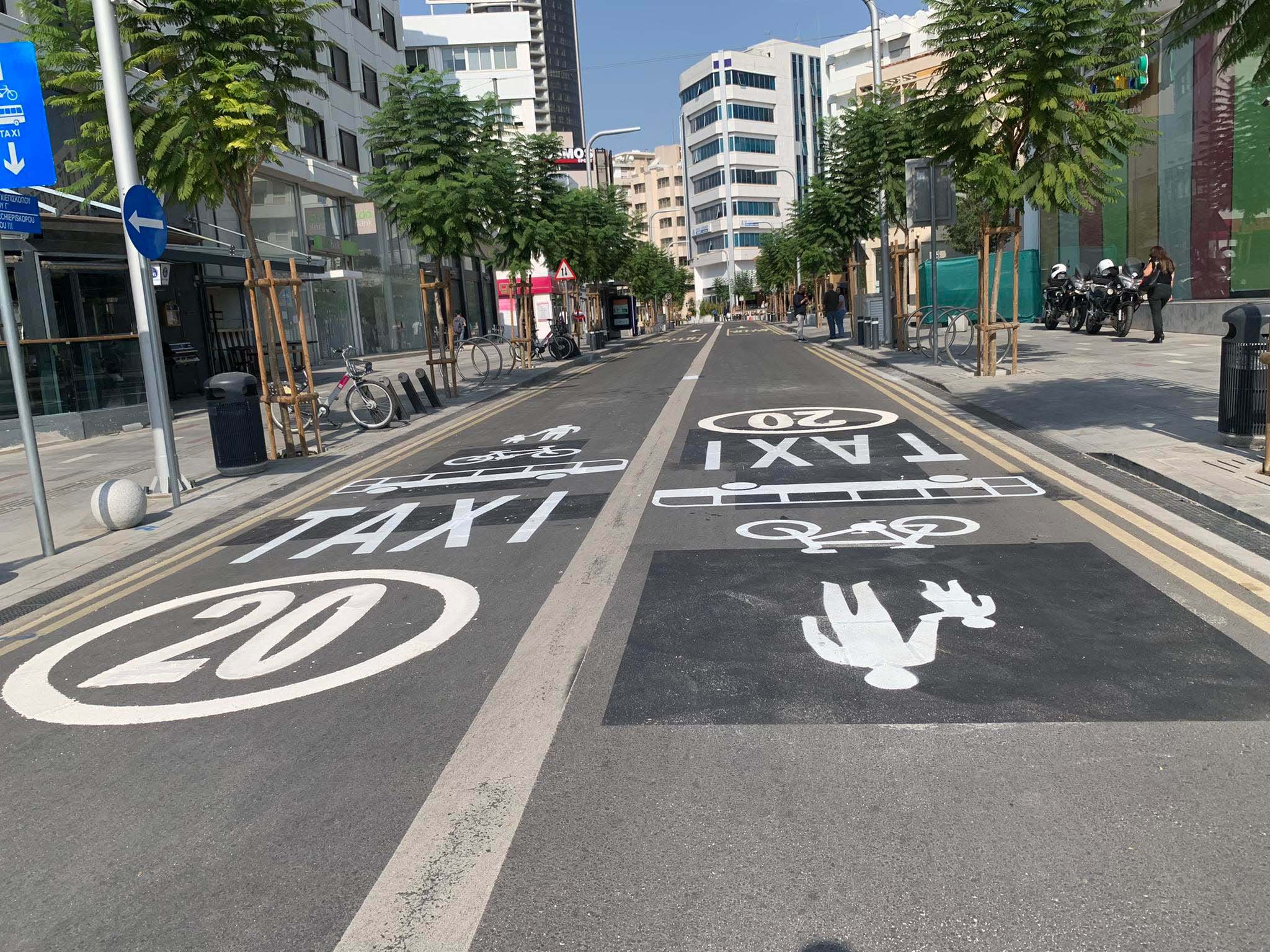
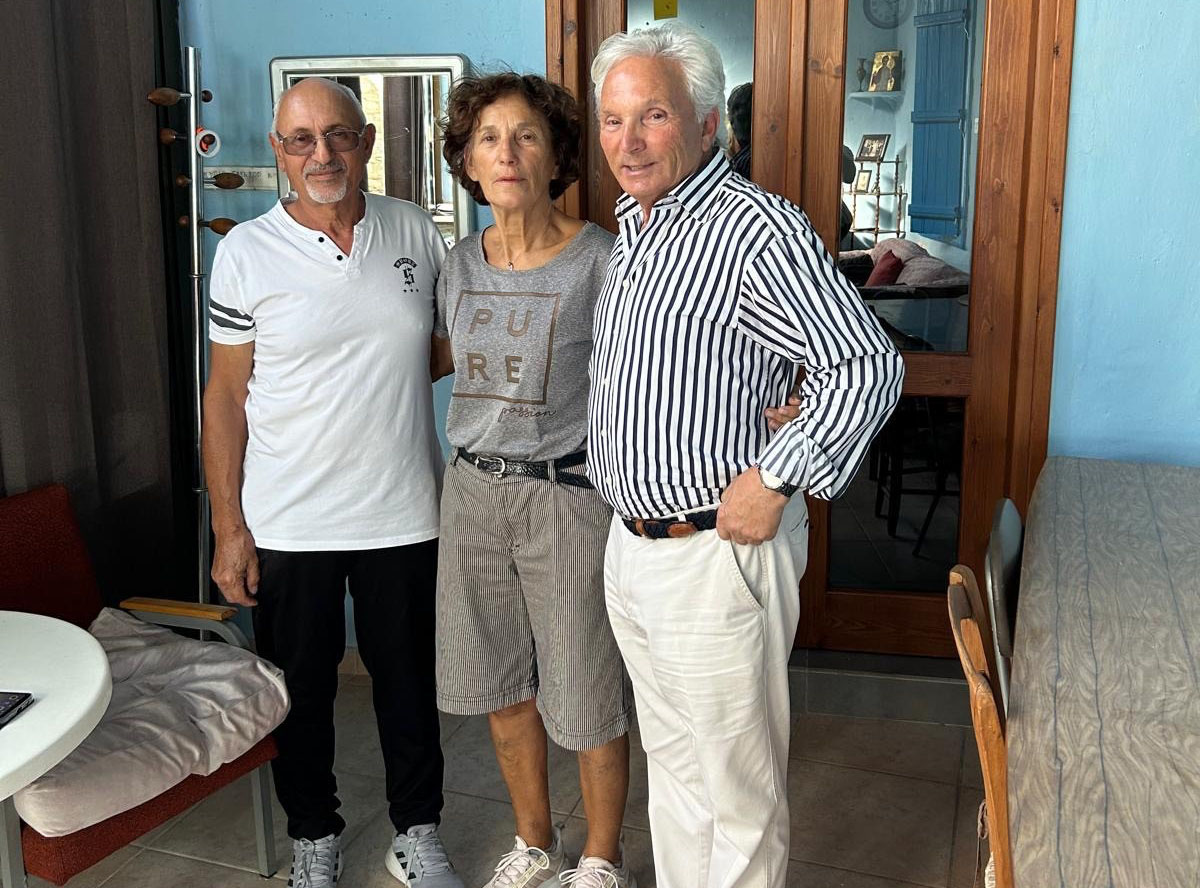

Click here to change your cookie preferences